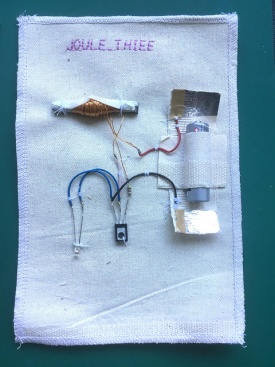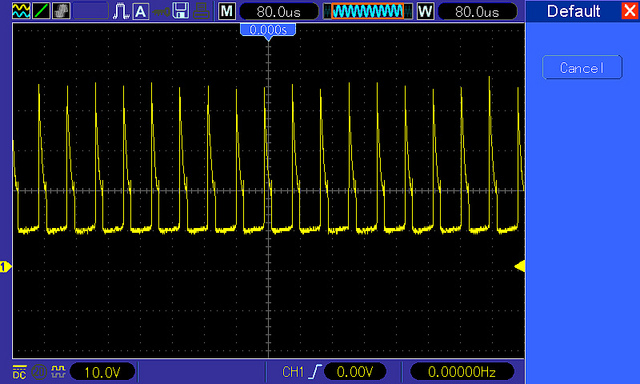Difference between revisions of "E-textile swatches"
| Line 90: | Line 90: | ||
|[[File:threeSB.png|250px]] | |[[File:threeSB.png|250px]] | ||
|[[File:four_sensor_body.png|250px]] | |[[File:four_sensor_body.png|250px]] | ||
| − | |Arduino Pro Mini | + | |Arduino Pro Mini - more power |
| + | |||
| + | LCD screen | ||
| + | |||
| + | 3 sensors, light, temperature and pollution. | ||
Lipo battery plus charger. | Lipo battery plus charger. | ||
Revision as of 19:56, 31 January 2019
Collection of E textile Swatches.
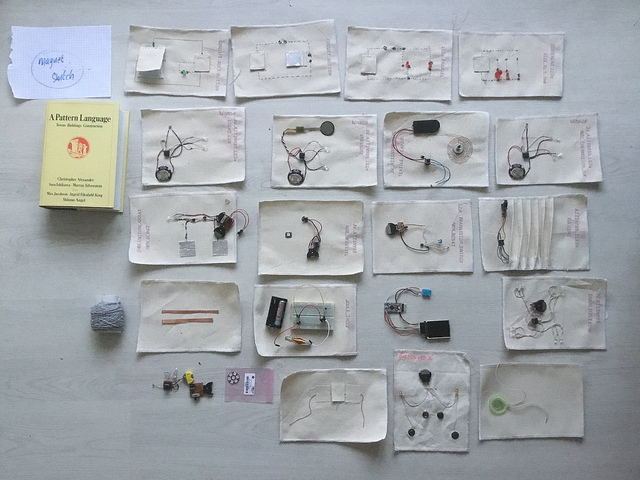
|
Swatches in progress These swatches contain a fabric part and an electronic part. Often electronics and fabric or other materials are intertwined, mixed, used by each other. |
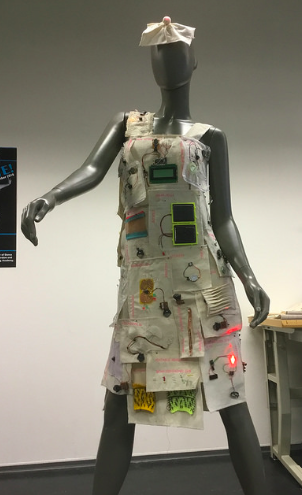
|
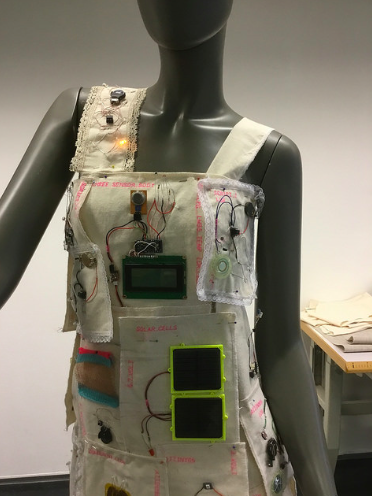
|
The dress of swatches could symbolize or give an impression of the complexity of our skin. |
Circuit, buttons and switches
Using fabric gives rise to an infinity of possibilities in closing and opening a circuit. Aluminum foil is a very cheap material compared to the expensive metal weavings.
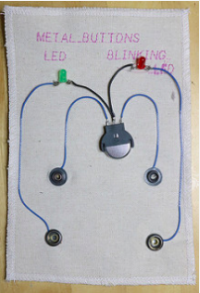
|
Buttons of metal, used for trousers as a switch.
You can get the buttons at the Fabric Station. |
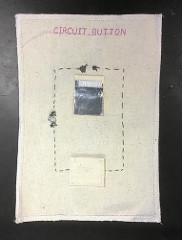
|
Piece of aluminum foil on fabric using flysofix as a switch which folds to close the circuit and start an led. |
ATtiny85 swatches
The ATtint85 as a cheap workhorse.

|
Charlieplexing, 8 leds connected to the four pins of the ATtiny85. |

|
Folding with ATtiny85 and 5 leds. An example of interaction between material and led. |
Sensor swatches
Sensors are one part of the sensor, actuator, microcontroller trinity.
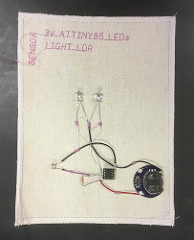
|
LDR in combination with a fixed resistor.
ATtiny85 can blink with 2 leds.
|
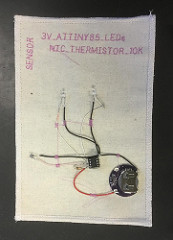
|
Themistor (NTC) with a fixed resistor.
ATtiny85 can blink with 2 leds. |
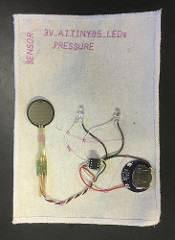
|
Pressure sensor with a fixed resistor.
ATtiny85 can blink with 2 leds. |
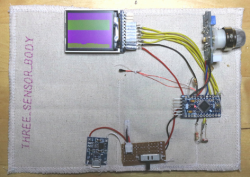
|
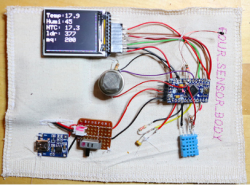
|
Arduino Pro Mini - more power
LCD screen 3 sensors, light, temperature and pollution. Lipo battery plus charger.
|
Led swatches
The variations in leds is endless. Interesting is the difference in voltage between the colors, which might lead to surprises if you connect different colors in parallel.
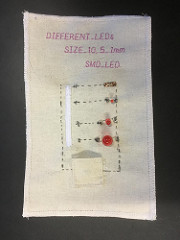
|
Different red leds, from 10mm, 5mm, 1mm and an smd led. |

|
Parallel leds in a circuit with an open connection, use something conductive to close the circuit.
Coming soon. |
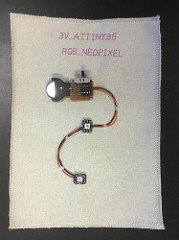
|
RGB neopixels. ATtiny85.
One of the neopixels is covered by filling and cloth to investigate the effect of the light under fabric. (Coming.) |

|
A piece of copper strip with smd leds soldered on the copper strip.
Parallel connections. |
555 swatches
The 555 is an old component, used for a timer, but also for making noise, sirens and alarms.
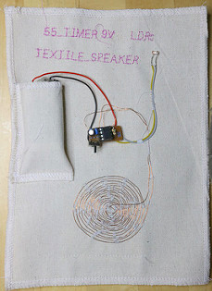
|
Textile speaker. 9V, use of magnets.
The 9V is necessary because the textile speaker is producing a very low volume level. LDR for variable input, causing the tone to rise and fall. |
Conductive Wool swatches
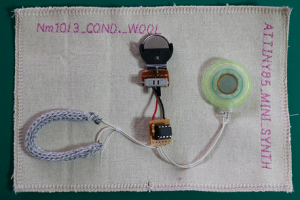
|
Textile Synthesizer
Using a knitting of conductive wool inside a voltage divider. Speaker gives a low to high tone, depending on pulling the conductive wool ATtiny85, 3V. |
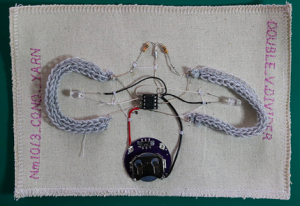
|
Circuit with two strings of conductive wool
Using two voltage dividers Two LED's to indicate which side is touched - pulled. ATtiny85, 3V. |
Transistor swatches
Transistor acting as an amplifier and as a switch.
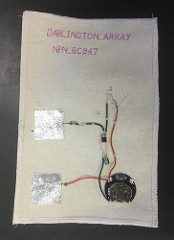
|
Darlington array. By amplifying the signal with 2 transistors you can detect if a human touches a pad of aluminum foil.
You need to touch both pads. |
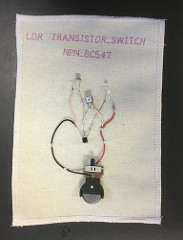
|
Transistor switch.
LDR in connection with a fixed resistor makes the BC457 into a switch. |
